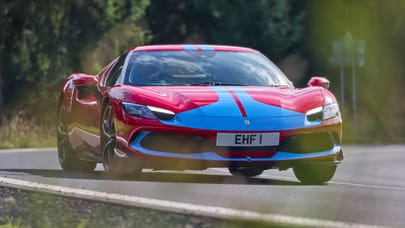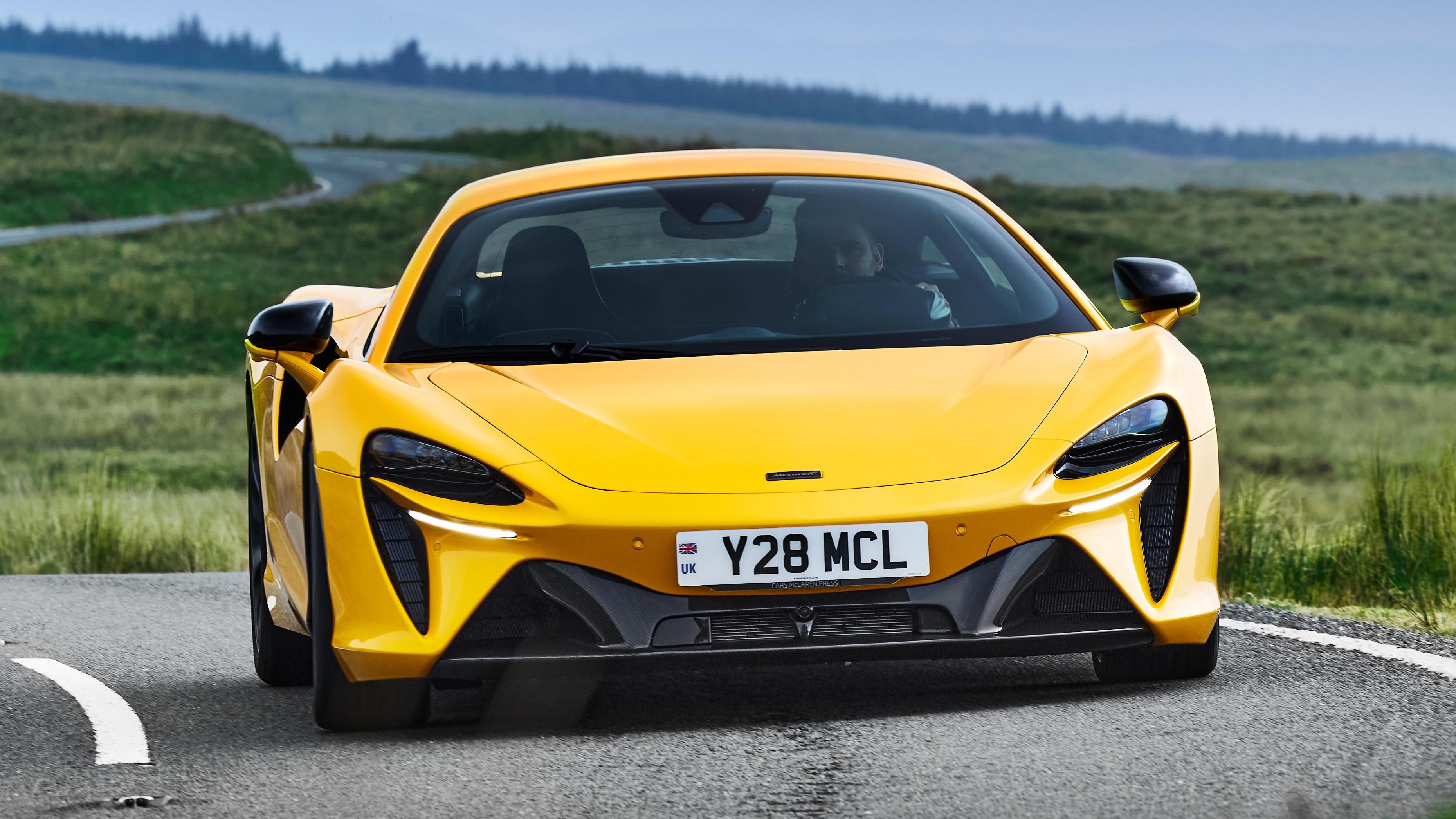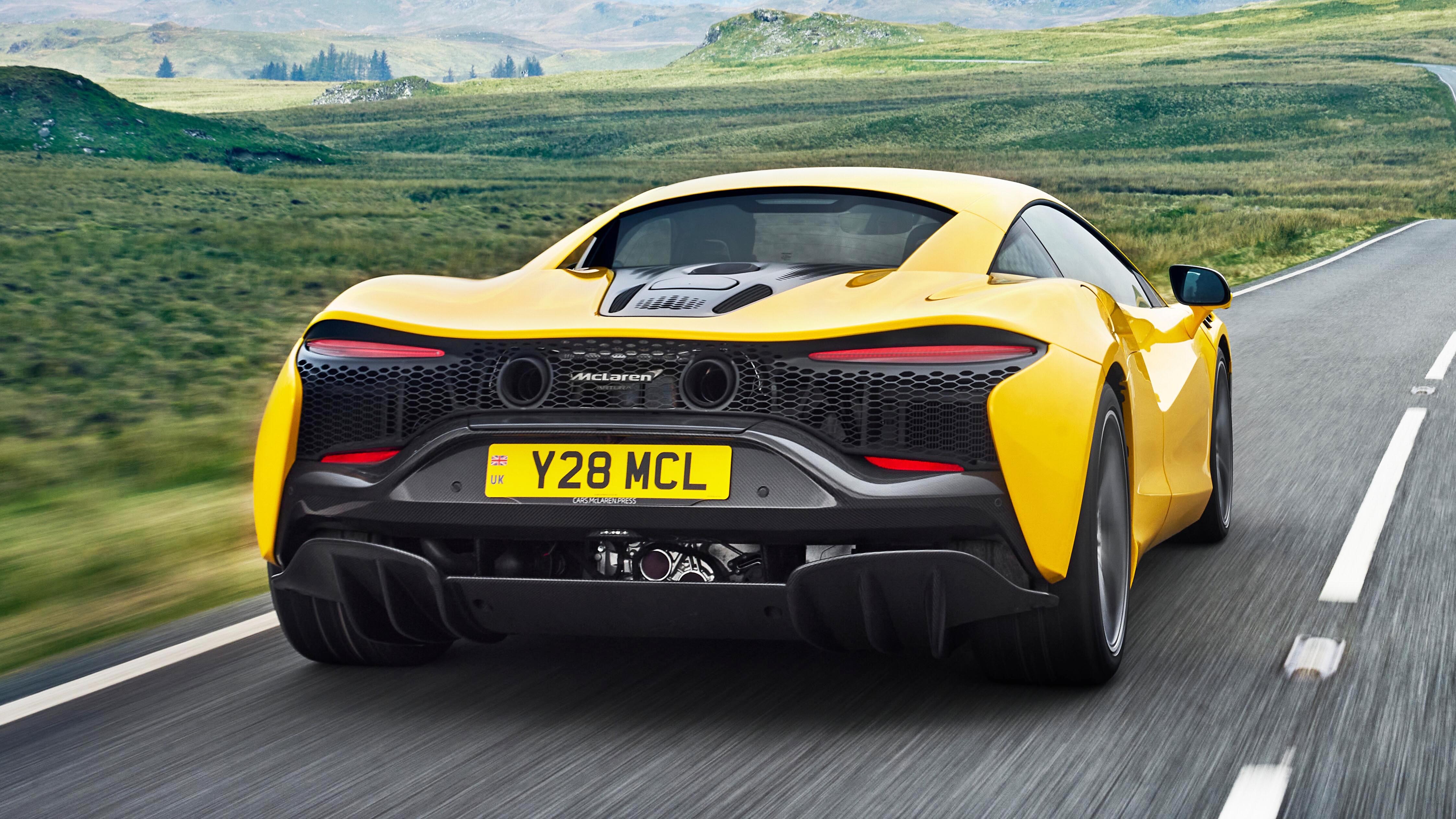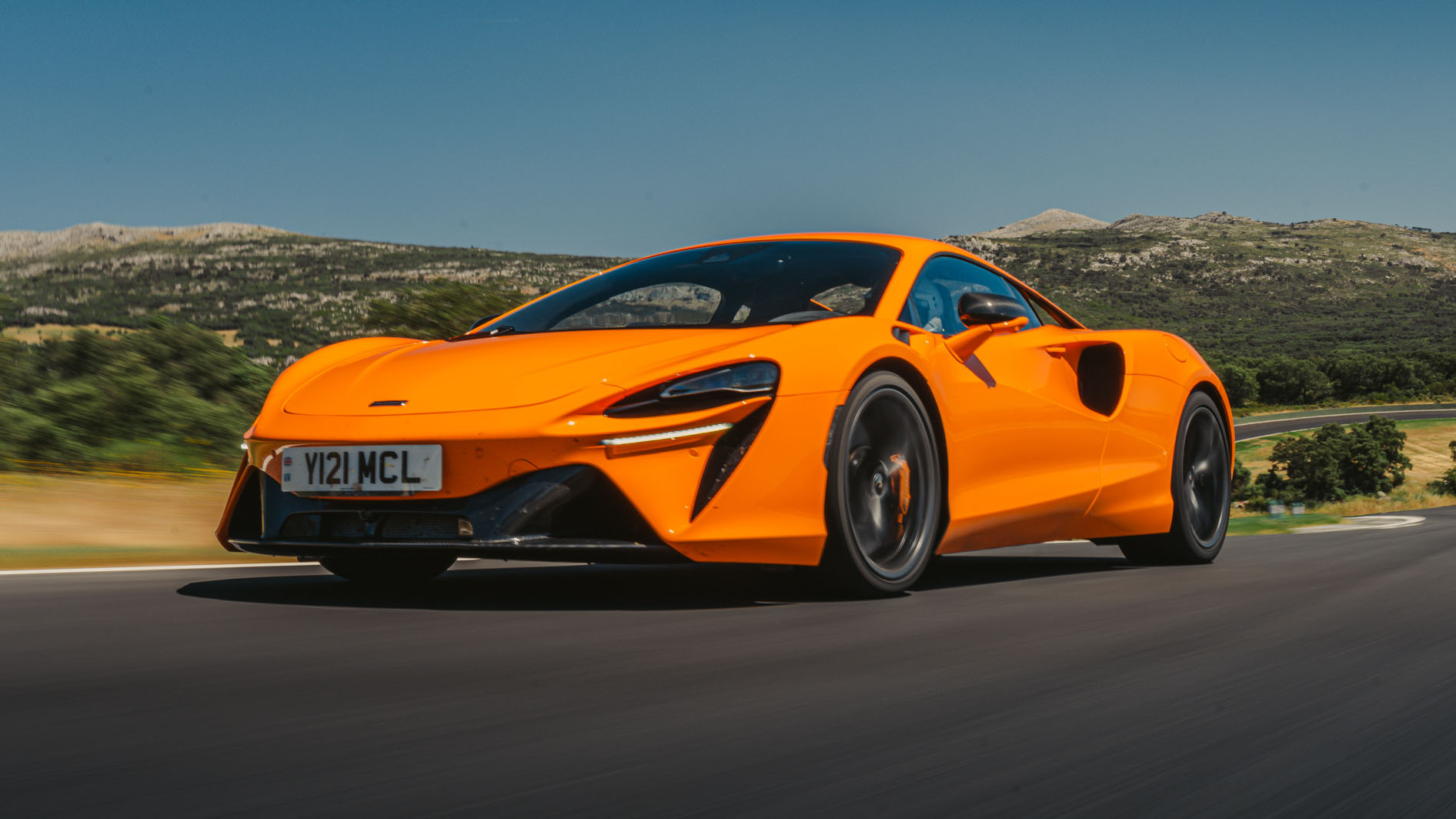
Good stuff
Technical package, chassis balance and communication, powertrain response and versatility
Bad stuff
Familiar styling, feels slightly constrained, the (much more expensive) Ferrari 296 casts a long shadow
Overview
What is it?
The first in a new generation of McLarens. It’s a hybrid supercar, mating twin turbo power with an electric motor and plug-in capacity. McLaren says it’s not a replacement for the Sports Series (570S et al), but come on, it is. This is the entry-level hybrid McLaren, priced from just over £200,000, and designed to fight the likes of the Porsche 911 Turbo S, the upper reaches of the AMG GT range, and maybe steal a few price-savvy customers away from the considerably more expensive Ferrari 296 GTB. Which also had a mid-mounted V6 hybrid set-up.
It doesn’t look much different, does it?
It’s an exercise in familiarity: the nose, flying buttresses from the Sports Series, indeed the overall stance, proportions… it’s a bit of a ‘570S with 750S headlights’, for us. And that’s a problem. Enough to make it hard to work out if this is a new car – which must make it a tough sell for existing customers thinking of upgrading.
And if you only read the highlights, the underpinnings don’t seem much different either. It’s built around a two-seat carbon tub (now called the McLaren Carbon Lightweight Architecture), with a twin turbo engine bolted on the back, driving the rear wheels through a twin clutch gearbox. So far, so familiar. It appears to be the same basic kit of parts that underpins almost all other McLarens.
So you have to dig for the differences. A 3.0-litre V6 instead of a 4.0-litre V8, and it’s not like they’ve merely lopped a pair of cylinders off: the bank angle has changed from 90 degrees to 120 degrees, the turbos relocated to the inside. Only a handful of bolts were carried over.
The gearbox now has eight speeds rather than seven, the space for that found due to the absence of a reverse gear; that’s handled by the electric motor alone. The 94bhp, 166lb ft, 15.4kg electric motor is mounted in between engine and gearbox, taking power from a 7.4kWh battery pack down behind the seats.
I’m thinking this sounds rather familiar?
You’re not wrong. A ‘hot vee’ V6, 7.4kWh battery, electric reverse, two-seat cabin, electronic differential, plug-in capacity and more means the technical package is very similar to the Ferrari 296 GTB's. Both firms say they’re not rivals, and seeing as the Ferrari has 140bhp more and costs an extra £50k you might agree.
Hmm. The biggest point of differentiation is the McLaren’s carbon chassis tub. It’s brand new, now produced internally at McLaren’s new MCTC (McLaren Composites Technology Centre) in Sheffield. It weighs just 82kg, boasts greatly increased strength and rigidity and contributes significantly to the Artura’s 100kg weight advantage. 1,498kg (DIN, the dry weight is 1,395kg, against the aluminium chassis’d Ferrari’s 1,470kg) is impressive for a plug-in hybrid supercar.
When did the Artura go on sale?
After lengthy delays with troublesome tech, we finally tested one for the first time in summer 2022. Roll around to autumn 2024 and the car’s been treated to a suite of upgrades answering media and customer feedback. They apply to this coupe and the newer Artura Spider.
What’s changed?
Nothing about the styling, which feels like a mistake. You’re still going to have to tell people this is the very latest McLaren. But underneath, there’s been a decent overhaul. A remap for the V6 liberates an extra 20bhp, so overall the car now develops 691bhp (700PS). The power delivery itself has been tweaked so the engine has a zippier, more exciting top end near the redline, and a hard rev-limit cut-out.
Both the standard and optional Sports Exhaust systems have been changed to conjure more noise from the V6. The engine mounts too are new: the old ones were designed for McLaren’s V8 cars and as a result it was felt they were too good at soaking up vibration from the engine. Now you get more of a tingle through the bulkhead, supposedly.
There are also detail changes: a new power steering pump is able to power the nose-lift system to full height in four seconds instead of around 10. Learnings from F1 have improved cooling to the brakes, and there’s now a wireless charger which McLaren says your phone cannot fall out of, no matter how fast you drive.
Can you drive on electric?
You can, for up to an official 19 miles (call it 12), but there’s no regen braking – McLaren didn’t want electric recuperation to interfere with pedal feel. The whole front end is as analogue as can be, with double wishbone suspension, adaptive dampers and hydraulic steering. We have some slight issues with standard carbon ceramic brakes (see the Driving section), but no complaints about the steering or the way it tackles corners. It’s only around 60kg heavier than the old 570S.
No fast charging though (instead, 2.5 hours to get to 80 per cent), which means on the move the battery is topped up by the engine. There are modes to help you manage that, but unless you do short daily hops on e-power alone, the Artura is not a fuel efficient hybrid. In mixed driving across the UK we averaged 24.4mpg – not much better than Sport Series cars we’ve driven in the past. McLaren of course claims 61.5mpg because the short test cycle maximises electric use.
How’s the quality?
Ah, that old chestnut. It’s been a McLaren bugbear since the days of the 12C. Well, there’s a whole new ethernet electrical architecture, reducing the weight of the wiring loom by 10 per cent as it needs 25 per cent fewer cables. It also permits over the air updates (one of which will be wireless support for phone mirroring – at the moment you have to be plugged in).
However, the cabin quality and habitability is great. It’s more luxurious than the old Sport Series, better insulated, wrapped in more tactile materials, there’s thoughtful stowage and visibility is good – especially out the back. Direct yourself to the Interior tab for more on that.
Does it drive like a McLaren?
Hybrid helps massively, because instant e-power overlaps turbo lag – as a result you have torque when you want it, you don’t have to second guess the mid-range lag. It’s deeply fast (0-62mph in 3.0 seconds, 124mph in 8.3s, 205mph top speed), but doesn’t feel as explosive as the Ferrari (2.9s, 7.3s and ‘over’ 205mph).
However, there’s precious little drawback or penalty to it being a hybrid. It’s still light (not much heavier than a V6-no-hybrid Lotus Emira in fact) and has that familiar precision, natural purity and athleticism that we’ve come to love from McLarens. It covers ground professionally, delivers feedback and confidence impressively, and feels colossally capable. And if you leave roads behind, it whips around a track with amazing composure and speed. The V6 even sounds good.
What's the verdict?
The concern is that visually the Artura doesn’t do enough to communicate the advances that have been made underneath. Neither does the tech spec if you just skate through it. In fact it doesn’t even come across as a revolutionary step forward to drive.
Instead this is McLaren integrating the technology and doing so very slickly. We’d have liked to see fast-charging and brake regeneration to improve efficiency, maybe a greater kick of e-power, too. But this is a very easy supercar to get on with. Maybe not as vibrant, explosive and alert as a Ferrari 296 GTB, but a better thought through daily driver. This interior, unlike the Italian one, isn’t vindictively tricky to operate.
This is a car McLaren needs to do big sales numbers. It deserves to do them, it’s a good car, but currently it’s living life in the shadows – there’s been little hype or excitement around it. And that’s a pity, as the Artura is evidence of McLaren’s continuing maturity as a company and sends the firm into the hybrid era with confidence and capability. Shame you’ll be hard pushed to spot it.
The Rivals
Trending this week
- Car Review
Chery Tiggo 9









